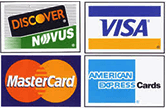ID Card Printing Blog

- 37 West 26th St 10th Floor New York, NY 10010 U.S.A.
- sales@idsecurityonline.com
- 800-897-7024
- 1 (888) 239 4912
2009-2024 © IDSecurityonline.com. All rights reserved.
Supply Finder
No-Hassle Return Policy
Not 100% satisfied with your order? Our
knowledgeable customer service team is here to assist you.
Call us at 800-897-7024
or email us at info@idsecurityonline.com.
- To qualify for our Unopened/Unused return policy the product must be factory sealed and unused.
- A 20% restocking fee will be deducted from your credit.
- Printer ribbons may be exchanged with no restocking fee, provided you receive pre-authorization.
- Software cannot be returned for any reason.
We are unable to accept any return of items that have already been opened unless you have received pre-authorization from us.
What should I do if the order I received is incorrect (missing items or wrong items)?Products that are returned to us are subject to a restocking fee of 20%. If your shipment contains an unwanted item, you may return it within 30 days of delivery for a refund of the item price minus any applicable restocking fees.
If there is an error on our part related to your order, we will issue a credit for the total amount of your order, including shipping charges.
Any items that you return to us must be in the original manufacturer's packaging. We suggest you keep the packaging (manuals, boxes, cables) for at least 30 days after your purchase.
Low Price Guarantee
If you get a lower price from another legit website or retailer, let us know and we will beat it. Simply send us the quote via fax or email, or provide a URL within 7 days of purchase date. We will verify pricing and contact you to make sure that you get the best deal on the items that you need.
If you have questions, call your sales representative at 1-800-897-7024 to get a quote on the ID card solution that you need.
At ID Security Online, we strive to offer the best shopping experience for all our customers. Read what our customers say about us and find out why ID Security Online is a reference in superior customer service. Our team works hard every day to offer you tremendous support and make sure that you build a successful ID card program. Your satisfaction is our success!
FREE shipping on all orders over $100
We keep a large inventory of all items in our warehouse in Manhattan, NY, which allows us to process and ship your order very quickly. Most orders ship the same day!
A tracking number will be emailed to you as soon as your order ships. You can also log in to your account to check the status of your order.
Shipping times, methods and costs will vary based on your location.
ID Security Online offers FREE UPS ground shipping on all orders over $100 in the United States.
Expedited shipping options such as 2-day delivery or overnight shipping are also available on most items. Simply choose your preferred option when checking out - shipping costs will vary based on your selection.
We also offer international shipping. Contact us for more details.
For more information, call 1-800-897-7024, chat live with us, or email us at sales@idsecurityonline.com.
Free Quotes on ID Card Printer Supplies
Log in for pricing
- View all our guaranteed lowest pricing/see MAP pricing
- Check order status, track your order, and view history
- Special promotions


